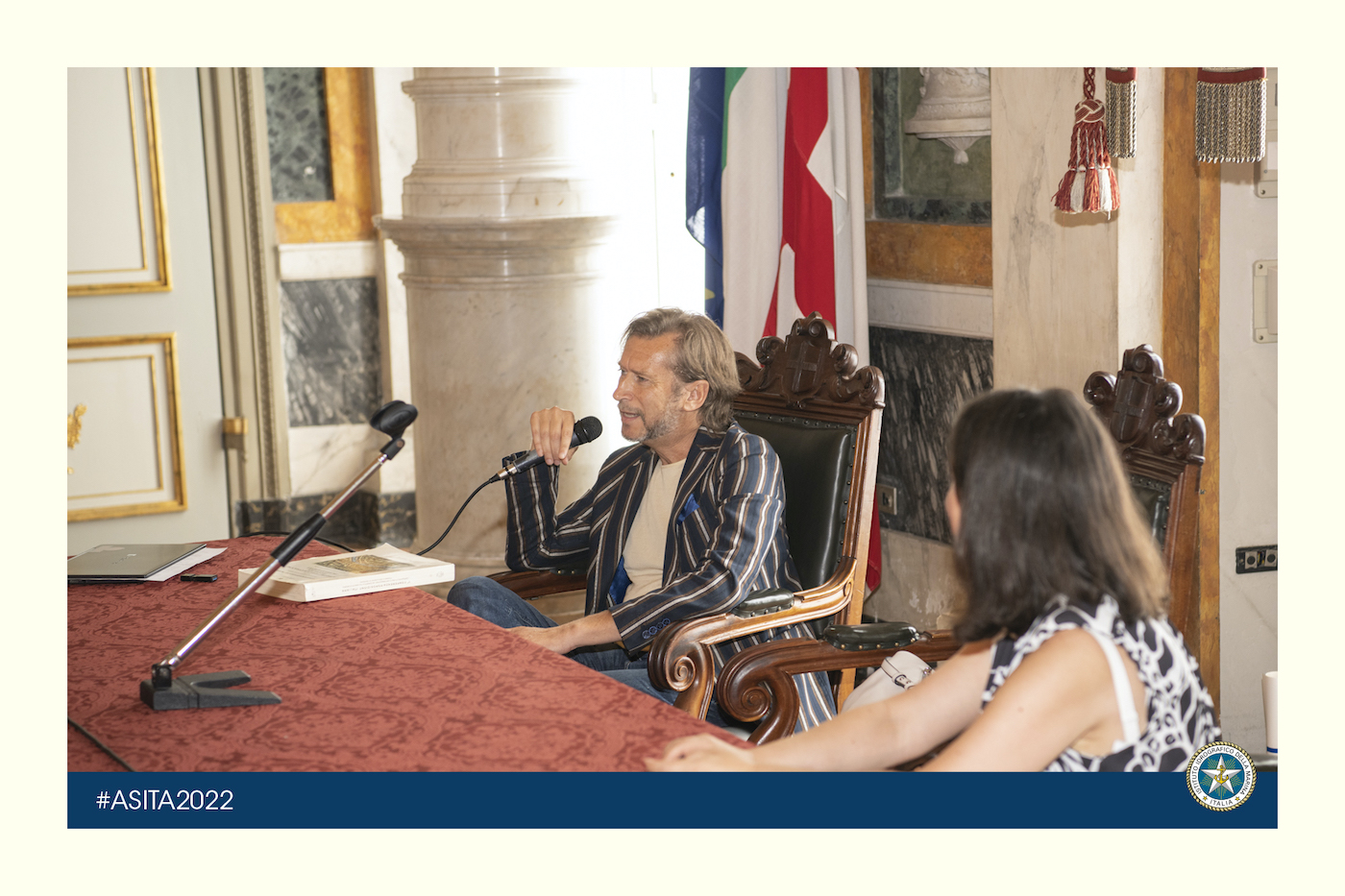These days, we can no longer afford to pretend we can just barely glimpse the revolutionary contribution that has been made to the world of professionals around the planet by the big techs (in our sector), among others, through their generalist geographic portals.
Nor can we continue to brand as scientific approximation their method in strategically tackling that world that we, Scientific Associations, together with the most established companies in the sector, believed we were presiding over with the exclusivity of knowledge and the most advanced technology: the time it takes to access an immense amount of geographical data residing on the internet has soon become one tenth of what we used to expect, and our locking up within our Tender Special Specifications will simply make us less credible in the eyes of that growing audience of subjects that we call users, and which evidently represents the market of the Associates that we have a duty to approach, starting with small and medium-sized enterprises and ending with the individual professional who is struggling at work and in life. If we do not do this, we will disappear.
The technological framework and business model outlined by those companies that today - whether one accepts it or not - mark the times, methods and rules of consultation and processing of the vast majority of published geographical data, and that have so far often been seen as a kind of obstruction to the scientific conversation, it should be clearly stated as of now that they will have to be carefully studied and if possible brought to the table of the Associations, so as to first and foremost qualify them. It is necessary to at least begin to show a general humility on the contents, seek an encounter with the Industry and attempt to generate a global, adjustable and - even more urgently- mutual learning, that is for us the only effective and possible means of sharing.

On 11 June 2001, the global market witnessed the release of Google Earth. It took none of us 'insiders' more than a couple of minutes, the time to get to grips with the surprise effect, to measure an extraordinary performance, that was not comparable (for how far it was superior) to that of products such as Autodesk Mapguide or the direct competitors of the time, positioned by ESRI, Intergraph or Bentley, at the time leading tools dedicated to the web consultation of raster and vector geographic data. The very concept of raster was debased in just a few moments, almost as if it had been overtaken by still unknown words, which had been able to refer to and perhaps even describe the practicality and simplicity of the dynamic and intelligent management of remote sensed images, which populated this formidable application capable of occupying the globe in a representation without geographical hesitation and continuity.
Earth then remained essentially the same, integrating some interesting functionalities over time, which, however, could not affect the first violent impact of product innovation. It is a fact that the other Big Techs were not able to respond rapidly, and did not want to do so in the years immediately following. Consequently, it is precisely from 2001 onwards that Google began to dig a trench that for a while increased in width (in terms of the quantity of the information entered) and in depth (in terms of its quality and geographical accuracy); then, the depth was filled by a number of competitors, as a result of which the big geographical data market was hit by an unprecedented rivalry based on quality: an arms race that saw first Apple enter the game, with the initial and fundamental support of a very strong and acclaimed segment brand as TomTom still is... then Amazon, and closely followed by Facebook and Microsoft, all of which, although leading the growth of a robust proprietary mapping sector, are to a greater or lesser extent still heavily anchored, and we are talking about truly significant investments, to a global geocartographic system, probably born (Joe Morrison) out of a conversation between recent graduates in an English pub in 2004, and whose commercial value is now out of control: OpenStreetMap.

Of the interesting and singular reasons that have at the moment prevented the big corporations from replicating OSM, suggesting them instead to invest in it by bringing in their own teams of editors, we will perhaps speak on another occasion. What seems more on topic now, however, is to report on the evolutionary framework of OSM content at the hands of the big brands of the IT world. Within the geographic areas (States, regions, crucial Human Settlements, etc.) where the white collar teams of the big names are active, the average incidence of editors operating on a voluntary basis is today less than 25% of the entire OSM geographic road/building data operation, whereas in 2017 this figure was around 70% (Jennings Anderson). Now, given that the big corporations are in this way impoverishing the ideological path from which the spirit of community that inspired the birth of the great free geographic portal had sprung, it remains to be seen what else these corporations are doing at the moment, each on their own account and more or less with the headlights off.

Otherwise known as F.A.A.N.G. (Facebook, Amazon, Apple, Netflix and Google), sometimes with the inclusion of Microsoft, these are the Big Techs that for some time have been influencing our behavior, our choices, our purchases and probably even our attitudes.
In the vicinity of Seattle (by the way, not without the support of the large Indian headquarters in Hyderabad, announced in September 2019 and now operating with about 15,000 engineers, structured in an area of almost 170,000 square meters) they are working on at least two fronts (we are talking about mapping, of course): on the one hand, the Amazon Location Service project, born together with ESRI and HERE Technology B.V. from a rib of Amazon Web Service, the latter, today a cloud computing platform with a major competitive advantage over the analogues provided by Microsoft (Azure) and Google (GCP). The above-mentioned partnership serves to fill the gap that Amazon, like the others, also suffers in terms of proprietary cartography (or acquired in perpetual license without disbursement of any fee for the benefit of the relevant suppliers): but while ESRI makes available to its partner some high-definition satellite databases, HERE contributes through the provision of its own geographic vectorial data referring in particular to road circulation, real-time traffic and address location.
Of course, partners receive payment on an on-demand (click) basis whenever the Amazon Location Service user performs an operation on geography, processes a route request, performs a different search, etc... And it is also for this reason that Amazon is also moving on its own account, in order to free itself from such costs. As is typical for big brands, once the allurement of a market has been verified, it is considered a serious strategic mistake to wait too long before being present, consequently Amazon Location Services, like other platforms, simply had to be born, necessarily together with selected and established partners in the segment. So, the goal was to get into it right away, more or less, to steady a service and then innovate and improve it, just as it was battling on market share points against its longtime competitors. Before long, Amazon will reduce the quantitative contribution of its consume-based geographic data providers, and resubmit a quasi-proprietary version of Amazon Location Services on the most important element, the mapping system: you can bet on it.
Facebook and Microsoft are also investing in the same endeavor to reduce the – as the present day - gross imbalance between third-party geographic data and data owned or acquired outright without conditions on publication; the platforms are called, for the uninitiated, Facebook Maps and Microsoft Azure Maps, respectively. But while Zuckenberg's creature (today “Meta”) does not seem to show any particular interest in a race for proprietary geographic information endowments - if not for certain categories or thematic classes - thereabout Redlands we are today witnessing an interesting acceleration, which also concerns 2D buildings, published and also made available in Opendata just in the last few weeks by the Bing subsidiary and with reference to a long series of countries, including Italy. The fullness of the data is good (we tested it for parts of our country) and the quality certainly more than decent.
And while what happens in Mountain View is always somewhat surrounded by that, more or less, invisible aura of mystery that almost always intrigues, Cupertino, eventually, shows detail and quality with the famous proprietary map of California, representing and symbolizing down to individual plants, in some cities. Apple New Map is indeed the qualitative-quantitative manifesto, reporting the formidable global geographic wishes of the brand founded by Steve Jobs. From a strictly GIS-oriented point of view, it is the most ambitious project.
In conclusion, will we, as Associations for the protection, dissemination, and comparison of geographic data in Italy, be able to keep up with the pace of a category credibility that envisages, without compromises, a greater openness of our awareness and a more convincing manifestation of our somewhat repressed humility?
These are reactions that are neither easy nor quick, but necessary. To young people, who are entering the world of the Associations federated in ASITA we say and recommend that they open up, open their vision of the market that will one day be theirs alone, in the direction of others, Public sector, Big Tech, Professional world, international segment majors, national Industry, etc... Geoinformation, sooner or later, will have to become one: we better realize it sooner than later.
Author
Valerio Zunino
Vice-President Association AMFM GIS Italia
Copia qui lo "short link" a questo articolo
www.geoforall.it/{sh404sef_shurl}




